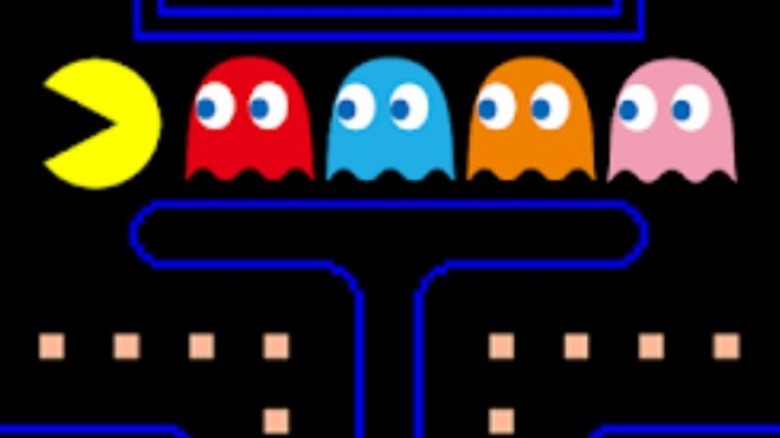How Pac-Man Helps Scientists Make Robots That Reproduce
When it comes to popular gaming icons, Pac-Man may be one of the biggest names out there. The hungry yellow sphere has made quite the name for itself since its first appearance in 1980, and the franchise is worth billions of dollars today. Now, Pac-Man's stepping into reality in the form of stem cell research in what scientists call "xenobots." In fact, Pac-Man helped the robotic cells reproduce, in a way.
In a scientific paper from PNAS, a peer-reviewed scientific journal, researchers from Harvard University and the University of Vermont shared that they were able to create robotic cells that could reproduce. These were made from the African clawed frog, and they're able to function on their own, gathering together to provide basic functions. While the cells were taken from a living being, some pop culture savvy individuals drew connections between the xenobots' self-replication and dystopian scientific tales like "The Matrix." The lead author of the study, Josh Bongard, pointed out that the purpose of a robot is to "act on its own on behalf of people," which these xenobots were able to do successfully (via CNN). There's no need to get worried just yet, and besides, the xenobots sort of look like Pac-Man when they reproduce.
Studying the cells, researchers noticed that they were reproducing in very small numbers and creating entirely new xenobots. This led to researchers discovering that Pac-Man's shape was apparently the perfect shape for reproduction — something even die-hard gamers might not know about Pac-Man.
How Pac-Man helps cells reproduce
When they were trying to figure out how to make the cells reproduce more frequently, researchers used an AI program to test out different cell shapes. Some shapes made the xenobots reproduce less, but Pac-Man's shape spurred on the reproduction, which was called "kinematic self-replication."
As the term suggests, the kinematic self-replication that was observed in the study was happening because of movement, particularly the movement of a circular part of a cell. Pac-Man's shape was perfect as the triangle-shaped gap allowed for the rotation of the xenobot to self-replicate, or reproduce (via Figure 2 of PNAS paper.) Apparently, Pac-Man's destined to keep moving in both games and real life.
While this discovery doesn't mean anything yet, the PNAS paper did explain that "future technologies may ... become more useful as they spread." This could lead to medical and technological advances in the future. Pac-Man's legacy could end up in industries that traditionally have very little in common with the gaming industry while also saving lives.
Of course, this isn't the first time that video games and science have gone hand in hand — video games helped researchers battle the coronavirus and helped scientists understand nuclear war.


